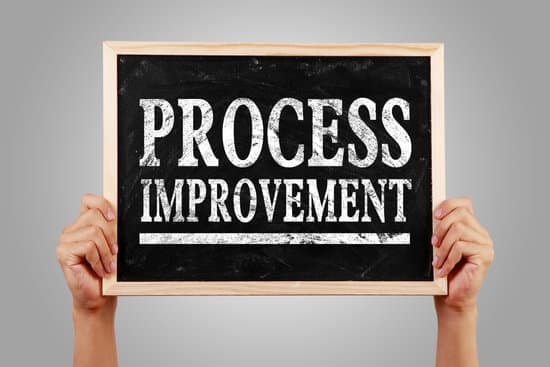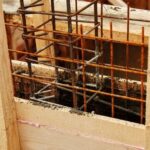Many homeowners find themselves in this position, and luckily, there are options available. In this article, we will delve into the concept of borrowing against your house for home improvements, discussing the benefits, risks, different options available, determining if it’s the right choice for you, applying for a loan or line of credit, understanding associated costs, and exploring alternatives.
Borrowing money against your house for home improvements can be a viable option for financing your renovation projects. Homeowners often turn to this method as it allows them to access funds through their property’s equity. Whether you’re looking to remodel your kitchen or add an extra bedroom, borrowing against your house can provide the means to bring your vision to life.
However, before diving into the process of borrowing against your house for home improvements, it’s essential to understand both the benefits and potential risks involved. This will enable you to make an informed decision regarding whether this is the right choice for financing your home improvement project. Understanding these aspects can help you navigate the lending landscape with confidence and clarity.
Benefits of Borrowing Money Against Your House for Home Improvements
Increased Access to Funds
One of the major benefits of borrowing money against your house for home improvements is the increased access to funds. By using the equity in your home, you may be able to access a larger amount of money than if you were to apply for a personal loan or use a credit card. This can be particularly useful for larger-scale home improvement projects that require substantial financial investment.
Lower Interest Rates
When compared to other forms of borrowing, such as personal loans or credit cards, borrowing against your house for home improvements often comes with lower interest rates. This can result in significant savings over time, especially if you are planning on making substantial renovations that will require a large sum of money.
Tax Deductible Interest
In some cases, the interest paid on a home improvement loan or line of credit may be tax deductible. This can provide additional financial benefits and make borrowing against your house an even more attractive option for financing your home improvement projects. However, it is important to consult with a tax professional to determine if you qualify for this benefit based on your specific financial situation.
Overall, when used responsibly, borrowing money against your house for home improvements can provide homeowners with access to greater funds at lower interest rates, potentially offering tax benefits along with the opportunity to increase their property’s value through thoughtful renovations. However, it’s crucial to carefully consider the risks and costs associated with this type of borrowing before making a decision.
Risks of Borrowing Money Against Your House for Home Improvements
Borrowing money against your house for home improvements can provide the funds necessary to make significant upgrades to your property. However, there are risks associated with this type of borrowing that homeowners should carefully consider before moving forward.
One major risk is the potential loss of your home if you default on the loan. When you borrow against your house, you are using it as collateral, which means the lender has the right to foreclose on your property if you fail to make timely payments.
Another risk of borrowing money against your house for home improvements is the potential for increased debt. By taking out a loan or line of credit, you are adding to your overall debt load, which can impact your financial stability and credit score. Additionally, if you use a home equity line of credit (HELOC) for your improvements, the variable interest rates can result in higher monthly payments over time.
It’s important to also consider the long-term impact on your home’s equity when borrowing against it for improvements. While renovations may increase the value of your property, there is no guarantee that they will recoup the full cost of the borrowed funds.
This means that you could end up owing more on your mortgage than what your home is worth if property values decline. Considering these risks, it’s crucial for homeowners to thoroughly assess their financial situation and explore alternative financing options before deciding to borrow against their house for home improvements.
| Risks of Borrowing Against Your House | Home Improvement Financing |
|---|---|
| Potential loss of home if defaulting on loan | Impact on financial stability and credit score |
| Potential for increased debt | Variable interest rates leading to higher monthly payments |
| Long-term impact on home equity | Thorough assessment of financial situation and exploring alternatives |
Exploring Different Options for Borrowing Against Your House
When considering borrowing money against your house for home improvements, it is important to explore the different options available to you. One common option is a home equity loan, which allows you to borrow a lump sum of money using the equity in your home as collateral. This type of loan typically has a fixed interest rate and a set repayment schedule, making it a predictable option for homeowners.
Another option is a home equity line of credit (HELOC), which also uses the equity in your home as collateral but functions more like a credit card with a revolving line of credit. This means you can borrow and repay funds as needed, up to a certain limit, and only pay interest on the amount borrowed. This option provides flexibility for homeowners who may not need all the funds at once or have ongoing home improvement projects.
Some homeowners may also consider cash-out refinancing, which involves replacing your existing mortgage with a new one that has a higher loan amount. The difference between the two loans is given to the homeowner in cash, which can then be used for home improvements. While this option may offer lower interest rates than other forms of borrowing, it is important to carefully consider the costs and potential risks involved.
It is crucial for homeowners to carefully research and compare these different options before making any decisions about borrowing against their house for home improvements. Each option comes with its own set of benefits and risks, so it is important to choose the one that best fits your individual financial situation and needs. By exploring different options, homeowners can make an informed decision that aligns with their goals and circumstances.
How to Determine if Borrowing Against Your House Is the Right Choice for Your Home Improvements
Borrowing money against your house for home improvements can be a big decision, so it’s important to carefully consider if it is the right choice for your specific situation. One of the key factors to consider is the current value of your home. Before deciding to borrow against your house, it’s crucial to assess whether the potential increase in the value of your property after the improvements will outweigh the costs associated with borrowing.
Another important consideration is how much equity you have in your home. Lenders typically allow homeowners to borrow up to a certain percentage of their home’s value, minus what is still owed on the mortgage. It’s essential to calculate how much equity you have and determine whether that amount will cover the costs of your planned home improvements.
In addition to considering the financial aspects, you should also evaluate your long-term plans for the property. If you intend to stay in your home for many years, borrowing against it for renovations may be a sound investment.
On the other hand, if you are considering selling in the near future, you’ll want to carefully weigh the potential increase in property value against the costs of borrowing money. Making an informed decision about borrowing against your house requires careful consideration of both short-term and long-term financial implications.
| Consideration | Description |
|---|---|
| Property Value | Determine if potential increase in property value after renovations outweighs borrowing costs. |
| Equity | Calculate how much equity is available and if it covers planned improvement costs. |
| Long-Term Plans | Evaluate how long you plan to stay in the property and whether borrowing is a wise investment. |
Steps for Applying for a Home Improvement Loan or Line of Credit
If you have decided that borrowing money against your house for home improvements is the right choice for you, it is important to understand the steps involved in applying for a home improvement loan or line of credit. Here are the key steps to consider:
- Assess Your Home’s Equity: Before applying for a loan or line of credit, it is essential to determine the current equity in your home. This will help you understand how much money you may be able to borrow.
- Research Lenders: Take the time to research different lenders and financial institutions that offer home improvement loans or lines of credit. Compare interest rates, terms, and other fees associated with each option.
- Gather Necessary Documentation: Once you have chosen a lender, gather all necessary documentation such as proof of income, employment information, and property documents required for the application process.
Applying for a home improvement loan or line of credit can be a streamlined process if you are well-prepared. By understanding your home’s equity, researching different lenders, and gathering necessary documentation, you can set yourself up for a successful application and secure financing for your home improvement project. Keep in mind that each lender may have specific requirements and processes, so it is important to follow their guidelines closely during the application process.
Understanding the Costs Associated With Borrowing Against Your House for Home Improvements
When considering borrowing money against your house for home improvements, it is crucial to understand the costs associated with this type of financing. By carefully evaluating the expenses involved, you can make an informed decision about whether borrowing against your house is the right choice for your home improvement needs.
Here are some key costs to consider when thinking about borrowing money against your house for home improvements:
- Interest Rates: One of the main costs associated with borrowing against your house is the interest rate on the loan or line of credit. Different lenders may offer different interest rates, so it’s essential to shop around and compare offers to find the best deal.
- Closing Costs: When obtaining a home equity loan or line of credit, there may be closing costs involved, such as application fees, appraisal fees, and other administrative expenses.
- Repayment Terms: Another cost to consider is how the borrowed money will need to be repaid. Understanding the repayment terms will help you determine if you can afford the monthly payments and whether this option aligns with your financial situation.
By taking into account these costs associated with borrowing against your house for home improvements, you can make a well-informed decision about whether this financing option is right for you. It’s crucial to carefully evaluate all the expenses involved in order to ensure that you are making a financially sound choice for your home improvement project.
Alternatives to Borrowing Against Your House for Home Improvements
When considering home improvements, borrowing against your house may not always be the best option for everyone. There are alternative options to consider that can help you achieve your goals without putting your home at risk. Before making a decision, it’s important to explore these alternatives and determine what is best for your financial situation and home improvement needs.
Personal Loan
One alternative to borrowing against your house for home improvements is applying for a personal loan. Personal loans are unsecured, meaning they do not require collateral such as your home. This can be a suitable option if you have a good credit score and stable income, as it allows you to borrow a specific amount of money for your home improvements without using your property as security.
Credit Cards
Using credit cards for home improvements can also be an alternative to borrowing against your house. If you have access to low-interest or 0% APR promotional credit cards, this could be an affordable and convenient way to fund smaller projects. However, it’s important to carefully manage your credit card usage and ensure that you can pay off the balance within the promotional period to avoid high interest rates.
Savings or Investment Withdrawal
If you have savings or investments, using these funds for home improvements can be another alternative to borrowing against your house. While this may deplete part of your savings, it eliminates the need for taking on debt or leveraging your property. It’s essential to weigh the potential opportunity cost of withdrawing from these accounts against the benefits of improving your home.
Considering these alternatives can help you make an informed decision about financing your home improvements without tapping into the equity of your house. Each option has its advantages and drawbacks, so it’s important to carefully evaluate which one aligns best with your financial situation and long-term goals.
Conclusion
In conclusion, borrowing money against your house for home improvements can be a viable option for homeowners looking to make renovations or upgrades. However, it is essential to carefully weigh the benefits and risks before making a decision.
One of the primary benefits of borrowing against your house is that you can access a larger sum of money at lower interest rates compared to other types of loans. This can give homeowners the financial flexibility to undertake more extensive and costly home improvement projects.
On the other hand, there are also significant risks to consider when borrowing against your house for home improvements. By using your home as collateral, you are putting it at risk of foreclosure if you are unable to repay the loan. Additionally, there may be potential costs associated with taking out a home equity loan or line of credit, such as closing costs and appraisal fees, which should be factored into your decision-making process.
When determining if borrowing against your house is the right choice for your home improvements, it’s important to assess your financial situation and long-term goals carefully. If you decide that borrowing against your house is not the best option for you, there are alternative financing methods to explore, such as personal loans or saving up funds over time.
Ultimately, making an informed decision about home improvement financing means thoroughly researching and understanding all available options before committing to a specific solution.
Frequently Asked Questions
Are Home Equity Loans a Good Idea for Home Improvements?
Home equity loans can be a good idea for home improvements if you have enough equity in your home and if the improvements will increase the value of your property. This type of loan typically offers lower interest rates compared to personal loans or credit cards, making it a cost-effective option for financing renovation projects.
Can You Use Money From Home Loan to Renovate?
Yes, you can use money from a home equity loan to renovate your home. Home equity loans allow homeowners to borrow against the value of their homes, providing them with the funds needed to make renovations and improvements. This can be a convenient way to finance renovation projects without depleting your savings or resorting to higher-interest forms of borrowing.
What Are the Disadvantages of a Home Equity Line of Credit?
One disadvantage of a home equity line of credit (HELOC) is that it puts your home at risk as collateral for the loan. If you are unable to make payments on the HELOC, you could potentially lose your home through foreclosure.
Additionally, the variable interest rates associated with HELOCs can result in unpredictable monthly payments, making budgeting more challenging. Lastly, some people may be tempted to use a HELOC for non-essential expenses, leading to unnecessary debt accumulation and financial strain.

I’m thrilled to have you here as a part of the Remodeling Top community. This is where my journey as an architect and remodeling enthusiast intersects with your passion for transforming houses into dream homes.





